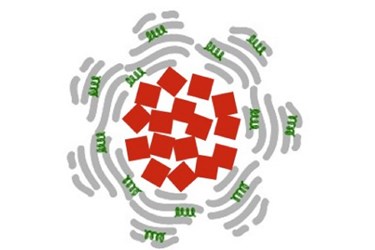Magnetic Nanoparticles Could Quickly Dissolve Stroke-Causing Blood Clots

Researchers have created a novel delivery system for stroke drugs using magnetic nanoparticles. They claim the technique could provide much greater accuracy and speed than current clinical standards in ischemic stroke intervention.
A team of scientists from Houston Methodist Research Institute (HMRI) loaded drugs onto iron oxide nanoparticles and coated them with albumin, a protein found in human blood. External magnetic fields could guide the nanoparticles to the blood clot and localized magnetic heating could speed clot dissolution. The albumin coating would disguise and protect the nanoparticles from the human immune system, according to a HMRI press release.
According to the American Stroke Association (ASA), ischemic strokes — those resulting from blood-clot blockages in the brain — account for 87 percent of all strokes. Current clinical standard treatments include tissue plasminogen activators (tPA) or similar drugs. Though these medications can be successful if administered within three hours of symptoms, they do present a significant risk of hemorrhage and are not a feasible option for all patients.
“Although tPA and similar drugs can be very effective in rescuing our patients, the drug is broken down quickly in the blood meaning we have to use more if it achieve an effective clinical dose,” said Alan Lumsden, cardiovascular surgeon and co-author of the study, in the press release. According to Lumsden, this increased dose presents an elevated risk of brain hemorrhage.
The drug administered on its own travels around the vascular system, and only some reaches the targeted clot. The researchers believe that magenetic nanoparticles could provide targeted accuracy and speed the drug’s delivery, so that clinicians could get the maximum benefit from a small amount of tPA.
Paulo Decuzzi, the study’s co-principle investigator, explained, “We have designed the nanoparticles so that they trap themselves at the site of the clot, which means they can quickly deliver a burst of the commonly used clot-busting drug tPA where it is most needed.”
Though the technology has not been tested on humans, researchers are encouraged by their initial findings in mouse models.
In a study published in Advanced Functional Materials, the team reported, “In vitro, as compared to free tPA, the proposed nanoconstructs demonstrate a 100-fold increase in dissolution rate, possible because of a more intimate interaction with the fibrin network. The clot dissolution rate is further enhanced (~10-fold) by mild, localized heating resulting from exposure of tPA-NCs to alternating magnetic fields.”
Iron oxide has already been approved by the FDA for use at a MRI contrast agent, and Decuzzi said his delivery system would not require more than the currently accepted dosage. All other design materials, Decuzzi reports, occur naturally in the body, so he is confident of the design’s safety.
Decuzzi plans to test the nanoparticles in other animal models before proceeding to human trials. If developed successfully, researchers think the system could be used in a number of indications beyond stroke, including pulmonary embolism and heart attack.
Image credit: Paolo Decuzzi laboratory, Houston Methodist Research Institute
